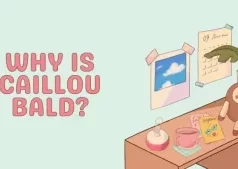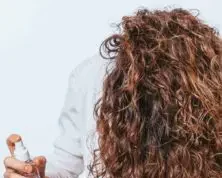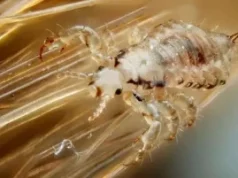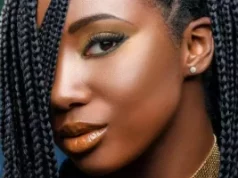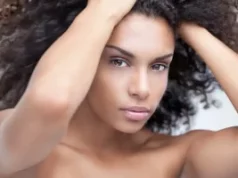In various cultures around the world, hair is often associated with beauty, identity, and health. As a result, there are numerous myths and misconceptions about hair growth and how to maintain healthy, luscious locks. One common belief is that braids, particularly protective hairstyles, can significantly enhance hair growth. However, it’s essential to understand that the relationship between braids and hair growth is more complex than it may seem.
Understanding Hair Growth and its Factors
Before delving into the potential effects of braids on hair growth, it’s crucial to grasp the fundamentals of hair growth itself. Human hair growth occurs in cycles, with each hair strand going through an anagen (growth) phase, a catagen (transitional) phase, and a telogen (resting and shedding) phase. On average, hair grows about half an inch per month, and genetics largely determine an individual’s natural hair growth rate.
Do Braids Help Your Hair Grow?
Braids themselves do not directly make your hair grow faster or thicker from the scalp. Hair growth primarily depends on factors such as genetics, diet, overall health, and individual hair care practices. However, certain types of braids, when done correctly and maintained properly, can help preserve the health of your hair and prevent breakage. This can lead to the appearance of longer, healthier hair over time.
Which Braids Are Best for Hair Growth?
When it comes to choosing braids that can help maintain hair health and minimize damage, consider the following options:
- Box Braids: These are larger braids that are not as tight as some other styles, reducing the tension on the hair. They can be a good choice for promoting hair health.
- Loose Braids: Braiding your hair loosely can reduce the stress and tension on the hair shafts, which can be beneficial for hair growth.
- Two-Strand Twists: Similar to loose braids, two-strand twists are gentler on the hair and can help protect the hair from damage.
- Cornrows: When done properly and not too tight, cornrows can be a suitable protective hairstyle that preserves hair health.
Are Braids Bad for Your Hair?
Braids, especially when done too tightly or worn for extended periods, can potentially cause damage to your hair. Traction alopecia is a common issue associated with tight braids, as the constant pulling on the hair can lead to hair breakage and even hair loss over time. Additionally, improper braiding techniques or leaving braids in for too long can lead to tangling, matting, and even fungal or bacterial scalp infections if the scalp is not kept clean.
Also Read: How Long Does Henna Hair dye last
To avoid potential damage, it’s essential to:
- Choose looser braid styles to reduce tension on the hair.
- Avoid hairstyles that pull the hair tightly, especially near the hairline.
- Take breaks between wearing braids to allow the hair and scalp to rest and recover.
- Moisturize and care for your hair while it’s in braids to prevent dryness and breakage.
Does Braiding Hair Make it Grow Thicker?
Braiding hair does not make it grow thicker. The thickness of your hair is determined by genetics and cannot be altered by braiding. However, as mentioned earlier, wearing protective hairstyles like braids can help protect the hair from damage and breakage, which may result in the appearance of thicker hair over time. By preserving the health of your hair and preventing split ends and breakage, your hair may look fuller and healthier

Several factors influence hair growth and hair health, including:
- Genetics: The genetic makeup of an individual plays a significant role in determining hair type, growth rate, and overall health.
- Diet and Nutrition: A well-balanced diet rich in essential nutrients, vitamins, and minerals is crucial for promoting healthy hair growth.
- Hair Care Practices: The way we care for our hair, including washing, conditioning, and styling, can impact its health and growth.
- Environmental Factors: Exposure to pollutants, sunlight, humidity, and other environmental factors can affect the condition of the hair.
The Benefits of Protective Hairstyles like Braids
Protective hairstyles like braids have been used for centuries as a means to protect and maintain hair health. These hairstyles involve weaving the hair into tight, close-to-the-scalp braids, which can provide several benefits, such as:
- Reduced Hair Manipulation: By keeping the hair in braids, individuals can minimize the need for frequent styling and manipulation, which can lead to hair breakage.
- Protection from External Elements: Braids shield the hair from environmental factors, such as harsh weather conditions and pollutants, which can cause damage.
- Retention of Moisture: Protective hairstyles can help retain the hair’s natural moisture, preventing it from drying out and becoming brittle.
- Length Retention: By safeguarding the ends of the hair and reducing breakage, braids may aid in retaining length for some individuals.
How Braids Promote Hair Health
While braids can offer protective benefits, it’s essential to dispel the myth that they directly promote hair growth. Braids do not influence the rate at which hair grows from the scalp; instead, they help preserve the existing hair by minimizing damage and breakage. By retaining the length and health of the hair strands, individuals may experience the appearance of longer and healthier hair over time.
However, it’s important to maintain proper hair care while wearing braids to avoid potential issues such as tension alopecia, where excessive pulling on the hair can lead to hair loss. Additionally, keeping the scalp clean and moisturized is vital to support a healthy environment for hair growth, even while wearing protective hairstyles.
Conclusion
In conclusion, while braids and other protective hairstyles have their benefits, it is essential to recognize that they do not directly influence hair growth from the scalp. Instead, these hairstyles can help protect and maintain the health of existing hair, reducing breakage and promoting length retention. To support optimal hair growth and overall hair health, it is crucial to focus on proper nutrition, a healthy hair care routine, and overall scalp care. Always consult with a hair care professional for personalized advice and guidance on how to best care for your unique hair type and needs.

